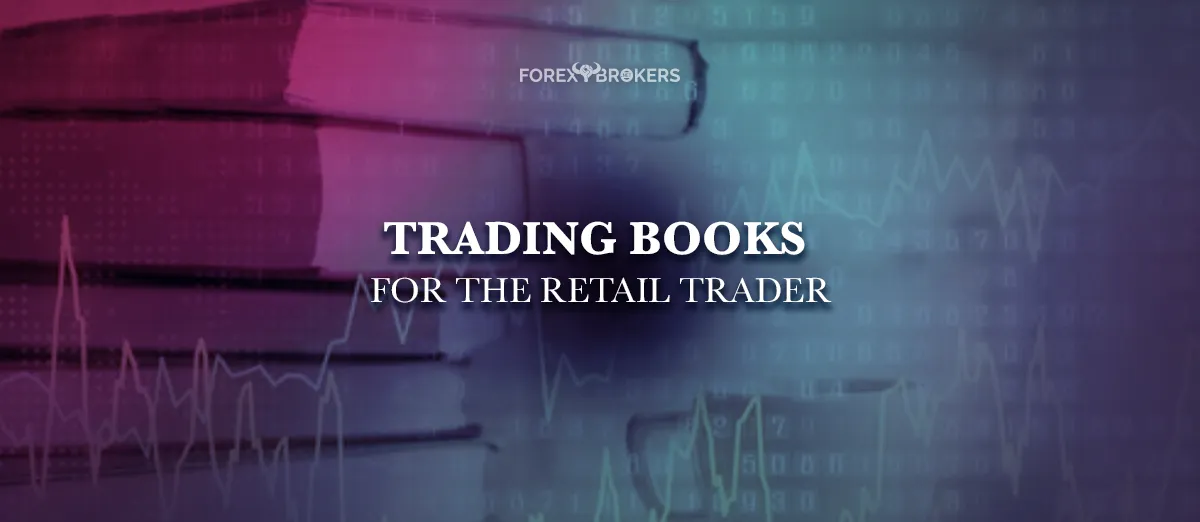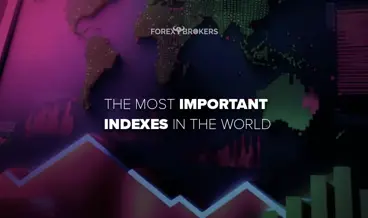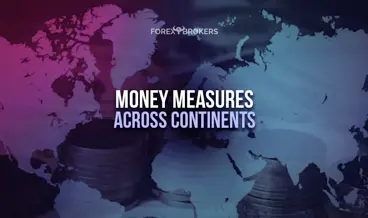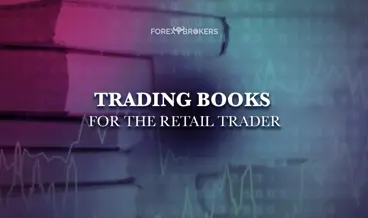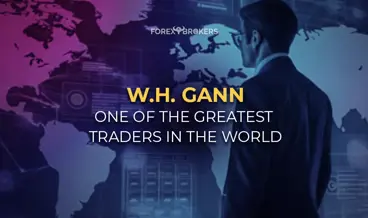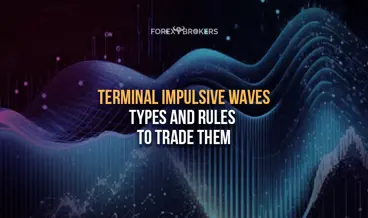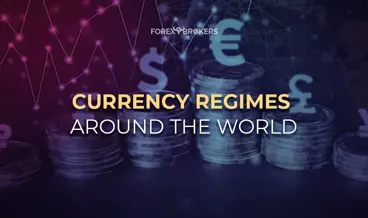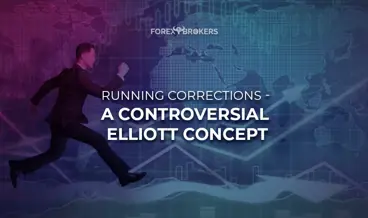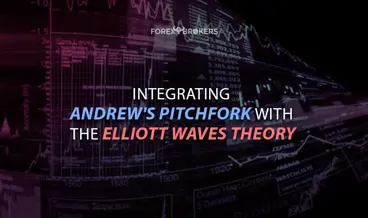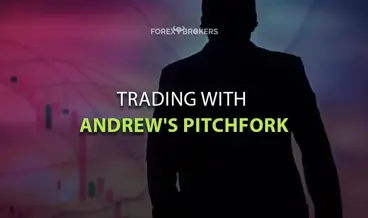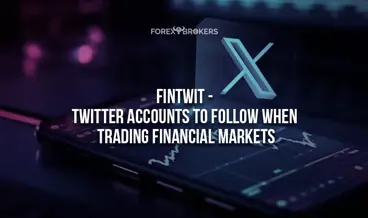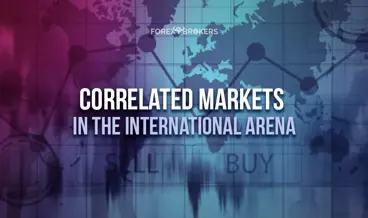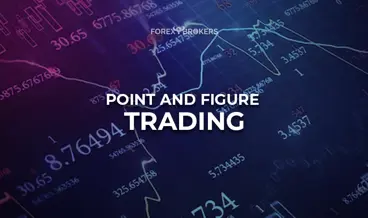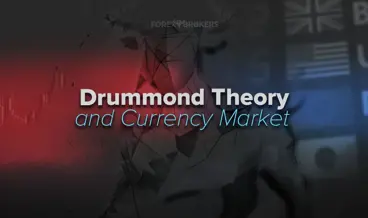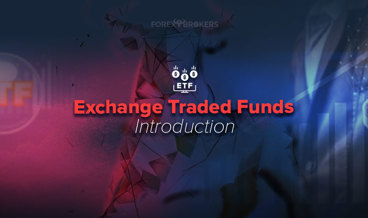Trading and investing are fascinating to many people. Those who are familiar with the concepts and have tried their fingers at financial markets have always wanted to learn more.
On the other hand, those who have never held a financial asset, either for speculation or investing, may have wondered the best place to start. The right answer for both categories is that educating yourself is the right place to start.
Sure enough, an economic background does help. That is especially true when it comes to interpreting interest rates and economic data that moves financial markets.
However, not all successful traders are economists.
To make it in financial markets, one must possess the right skills, education, guts, discipline and a sound work ethic. Financial markets are open all the time, including the weekend (i.e., cryptocurrencies trade over the weekend, and geopolitical events may influence traditional markets too). So, the trader or investor must be 100% connected to everything that is happening in the world.
There is a lot of trading literature on the subjects of investing, market psychology, etc. Also, one may specialize in a certain niche.
For example, one may trade only the currency and bond markets or just invest in stocks. However, due to the interconnection between all financial markets, an FX trader cannot ignore the stock market. A bond trader is always on the lookout for a change in interest rates, just like a stock market trader.
Those willing to dive into some of the greatest trading and investing books may find this article interesting. It presents various titles, from classic technical analysis to Japanese candlestick patterns, from Gann to Elliott, from market psychology and interest rates, and from the currency to the stock market.
Trading and Investing Books for All Market Participants
This article covers 30 books about trading and investing. The list below is in no particular order, and the aim is to make it easier for the reader to identify the title and to know a bit about the content. Also, each title comes with a link to the Amazon store, where the book's cover and other details are presented for those interested to know more.
Some remarks before getting to the list and a short description of each book. The selection here is made in such a way that it presents all aspects of trading.
Therefore, one may find some books explaining technical analysis concepts useful in all markets where a chart is interpreted. Some others may find a few titles or chapters dedicated to commodities such as gold or oil or to bonds and fundamentals that affect all financial markets.
Trading in the 21st century involves keeping an eye on everything that might move financial markets. Regardless of the trader's specialty, events in other markets or parts of the world may ruin a trade. Hence, the book selection presented in this article aims to cover a wide range of subjects, helping the reader better understand financial markets, what moves them, and, more importantly, how to trade them.
30 Books to Read to Boost Your Trading to the Next Level
- Reminiscences of a Stock Operator - Edwin Lefevre, 1923
- Technical Analysis of the Financial Markets: A Comprehensive Guide to Trading Methods and Applications - John J. Murphy, 1997
- Market Wizards: Interviews with Top Traders - Jack D. Schwager
- The New Market Wizards: Conversations with America's Top Traders - Jack D. Schwager, September 2008
- Japanese Candlestick Charting Techniques, 2nd Edition - A Contemporary Guide to the Ancient Investment Techniques of the Far East - Steve Nison, October 2001
- Breakthroughs in Technical Analysis: New Thinking From the World's Top Minds - David Keller
- Fibonacci Analysis - Constance Brown
- The Gartley Trading Method: New Techniques To Profit from the MarketÂs Most Powerful Formation 1st Edition - Ross L. Beck
- The Heretics of Finance: Conversations with Leading Practitioners of Technical Analysis - Andrew W. Lo, Jasmina Hasanhodzic, January 2009
- Bollinger on Bollinger Bands - John A. Bollinger
- Technical Analysis for the Trading Professional, Second Edition: Strategies and Techniques for Today's Turbulent Global Financial Markets 2nd Edition - Constance A. Brown
- New Thinking in Technical Analysis: Trading Models from the Masters - Rick Bensignor
- The Greatest Trades of All Time: Top Traders Making Big Profits from the Crash of 1929 to Today - Vincent W. Veneziani, October 2011
- The Trading Game: Playing by the Numbers to Make Millions - Ryan Jones
- Day Trading the Currency Market: Technical and Fundamental Strategies To Profit from Market Swings - Kathy Lien
- The Money Game - Adam Smith, January 1967
- Supermoney - Adam Smith, May 2006
- Fooling Some of the People All of the Time, A Long Short Story - David Einhorn, May 2008
- The Alchemy of Finance - George Soros, June 2015
- Devil Take the Hindmost: A History of Financial Speculation - Edward Chancellor, June 2000
- The Lexus And The Olive Tree: Understanding Globalization, Updated and Expanded Edition - Thomas Friedman, January 2000
- Merchants of Grain: The Power and Profits of the Five Giant Companies at the Center of the World's Food Supply - Dan Morgan, October 2000
- Beating the Street - Peter Lynch, May 1995
- The Summit, Bretton Woods, 1994 - J.M. Keynes and the Reshaping of the Global Economy - Ed Conway, March 2016
- The Man Who Solved the Market: How Jim Simons Launched the Quant Revolution - Gregory Zuckerman, November 2019
- The Alchemists - Inside the Secret World of Central Bankers - Neil Irwin, March 2014
- The Big Reset: War on Gold and the Financial Endgame - Willem Middelkoop, February 2014
- Lords of Finance - The Bankers Who Broke the World - Liaquat Ahamed, March 2020
- The Prize: The Epic Quest for Oil, Money & Power - Daniel Yergin, December 2008
- Age of Turbulence: Adventures in a New - Alan Greenspan - September 2008
Reminiscences of a Stock Operator - Edwin Lefevre, 1923
An excellent book, Reminiscences of a Stock Operator, is so well-written that it is impossible for a trader not to recognize himself/herself as the book's main character. Despite being first published in 1923, the book is written with a lot of humor and appeals to today's traders and investors, too.
Above all, the book is about understanding market psychology and money management's importance when trading financial securities. The ups and downs of the main character reflect the booms and busts of the modern trading portfolio, even though the story was written a century ago.
Amazon link: https://www.amazon.co.uk/Reminiscences-Stock-Operator-Edwin-Lefevre/dp/1946963062
Technical Analysis of the Financial Markets: A Comprehensive Guide to Trading Methods and Applications - John J. Murphy, 1997
This is one of the most famous books about technical analysis. The author discusses the Dow Theory, the basic concepts of trend, the major reversal and continuation patterns, and so on. Basically, it represents the cornerstone of classic technical analysis.
Amazon link: https://www.amazon.com/Technical-Analysis-Financial-Markets-Comprehensive/dp/0735200661
Market Wizards: Interviews with Top Traders - Jack D. Schwager, January 2006
A highly acclaimed book where Schwager interviews top traders such as Michael Marcus, Bruce Kovner, Richard Dennis, Paul Tudor Jones, Gary Bielfeldt, Ed Seykota, Larry Hite, Michael Steinhardt, William O'Neil, David Ryan, Marty Schwarts, and many others.
Some of them are famous, others are not, but they all share a passion for financial markets and, somehow, found a way to profit from the markets' volatility.
Amazon link: https://www.amazon.com/Market-Wizards-Interviews-Top-Traders/dp/1592802974
The New Market Wizards: Conversations with America's Top Traders - Jack D. Schwager, September 2008
This is Schwager's second book as he continues interviewing other names such as Bill Lipschutz, Randy McKay, William Eckhardt, Al Weiss, Stanley Druckenmiller, Richard Driehous, Gil Blake, Victor Sperandeo, Tom Basso, Linda Bradford Raschke, Mark Ritchie, Blair Hull, or Jeff Yass.
Amazon link: https://www.amazon.com/New-Market-Wizards-Conversations-Americas/dp/1592803377
Japanese Candlestick Charting Techniques, 2nd Edition - A Contemporary Guide to the Ancient Investment Techniques of the Far East - Steve Nison, October 2001
A must-read book for any technical trader. Steve Nison was the first one to have introduced the concept of Japanese candlesticks to the Western world and the most important patterns are explained in this book.
He presents in a simple yet complete way concepts such as umbrella lines, engulfing, dark-cloud cover, piercing, harami, tweezers tops and bottoms, belt-hold lines, upside-gap two crows, three black crows, shooting star, inverted hammer, Northern and Southern Doji, Tasuki, and many others.
Japanese patterns need less time than classic technical analysis patterns to show market reversal or continuation conditions. For this, they are highly appreciated by technical traders.
Amazon link: https://www.amazon.co.uk/Japanese-Candlestick-Charting-Techniques-Contemporary/dp/0735201811
Breakthroughs in Technical Analysis: New Thinking From the World's Top Minds - David Keller
One of the best technical analysis books ever written. David Keller brings together the views of technical traders on concepts such as Drummond geometry, TD Combo, the Ichimoku cloud, price and time, Gann, point and figure, or market profile. Moreover, the book is filled with charts, making it easy for the reader to understand the technical concepts.
In particular, the reader should find technical analysis concepts that are rarely presented in the technical literature, such as the price and time principle. In other words, it matters when the price reaches a target and when. Sometimes, the time element is more important than the actual market price.
Amazon link: https://www.amazon.com/Breakthroughs-Technical-Analysis-Thinking-Worlds/dp/1576602427
Fibonacci Analysis - Constance Brown
This is a great book to understand Fibonacci ratios and how to apply them in technical analysis. Fibonacci levels appear in numerous technical analysis strategies and trading theories, such as the Elliott Waves theory, and this book reveals interesting ways to use the Fibonacci ratios.
Among other things, the reader will find out how to use Fibonacci channels, angles, and cycles with oscillators, how to read rhythmic wave diagrams and how to combine price and time in trading.
Amazon link: https://www.amazon.com/Fibonacci-Analysis-Constance-Brown/dp/1576602613
The Gartley Trading Method: New Techniques to Profit from the Markets Most Powerful Formation 1st Edition - Ross L. Beck
Gartley is one of the oldest trading theories of all time, together with the Elliott Waves theory. In fact, one may say that the Elliott Waves theory uses the principles of the Gartley method, and so one may say that Gartley sits at the core of Elliott's concept of counting waves.
The book is easy to read and moves gradually from topics such as setting realistic expectations when trading, discussing technical vs. fundamental analysis, trends, countertrends, etc.
The really juicy stuff for the reader comes when the Gartley method is presented. Also, the integration with the Elliott Waves theory and W.H. Gann is very interesting for the technical trader.
Amazon link: https://www.amazon.com/Gartley-Trading-Method-Techniques-Formation/dp/0470583541
The Heretics of Finance: Conversations with Leading Practitioners of Technical Analysis r - Andrew W. Lo, Jasmina Hasanhodzic, January 2009
The Heretics of Finance is a book similar to those written by Schwager in the sense that the authors interview some of the most successful technical analysts. The reader will find a history of technical analysis, as well as how emotions impact trading.
Among the names in this book are Linda Bradford Raschke, Stan Weinstein, Walter Deemer, Raber Garrell, and John J. Murphy.
Amazon link: https://www.amazon.com/Heretics-Finance-Conversations-Practitioners-Technical/dp/1576603164
Bollinger on Bollinger Bands - John A. Bollinger
Bollinger Bands are part of every trading platform in the world. They are used either in trend-following strategies or to spot reversals, and they are named after John A. Bollinger, the one who invented them.
This book goes a step further that simply explaining the indicator. After a short introduction and an in-depth look at how the Bollinger Band indicator is constructed, John Bollinger reveals how to use the indicator to recognize patterns such as the five-point pattern, W-Type bottoms, M-Type tops, and so on. Also, the author reveals another way of using the Bollinger Bands. More precisely, it shows how they can be used to spot volatility breakouts.
Amazon link: https://www.amazon.com/Bollinger-Bands-John/dp/0071373683/
Technical Analysis for the Trading Professional, Second Edition: Strategies and Techniques for Today's Turbulent Global Financial Markets 2nd Edition - Constance A. Brown
Constance Brown's book is for the technical trader only. It covers various topics and it is full of examples so that all concepts are properly understood.
Among other things, it presents strategies to trade with oscillators, it shows how to draw trendlines correctly, how to adjust the period setup for oscillators, how to interpret market cycles, how to use reverse-engineering indicators, how to derive price objectives from positive and negative reversals with the Relative Strength Index, how to use the Gann Wheel, and so on.
Also, it touches on the Elliott Waves theory by integrating the wave-counting process with the use of oscillators.
Amazon link: https://www.amazon.com/Technical-Analysis-Trading-Professional-Second/dp/007175914X
New Thinking in Technical Analysis: Trading Models from the Masters - Rick Bensignor
Rick Bensignor brings together in this book some important names in technical analysis. Each chapter is dedicated to a technical concept. For instance, Steve Nison presents a chapter on Japanese candlesticks, Linda Bradford Raschke talks about swing trading, and Kennet G. Tower talks about how to apply moving averages to point and figure charts.
Other technical aspects treated in this book: how to use intermarket analysis to forecast trends, how to spot early reversal signals using candlestick charts, how to use cycles for price projections, how to use oscillators, what is market profile and how to use it, how to build a money management strategy, how to incorporate sentiment in technical analysis, how to use volatility in the options market, and so on.
Amazon link: https://www.amazon.com/New-Thinking-Technical-Analysis-Trading/dp/1576600491/
The Greatest Trades of All Time: Top Traders Making Big Profits from the Crash of 1929 to Today - Vincent W. Veneziani, October 2011
Vincent Veneziani wrote a great book about some legendary investors and how they made big profits in financial markets. This is a must-read book to discover how traders think and act.
Among the names to read about in this book are Kyle Bass from Hayman Capital, James Chanos from Kynikos Associates, Paul Tudor Jones from Tudor Investment Corporation, John Templeton from the Templeton Growth Fund, Jesse Livermore, the main character from the book Reminiscences of a Stock Operator, John Paulson from Paulson & Co, David Einhorn from Greenlight Capital, and John Arnold from Centaurus Advisors.
Amazon link: https://www.amazon.com/Greatest-Trades-All-Time-Traders/dp/0470645997/
The Trading Game: Playing by the Numbers to Make Millions - Ryan Jones
This book is about money management. This trading academy covered money management in various articles, and this book explains all there is to know about a proper money management system.
It presents the types of money management to use, what is fixed fractional trading or fixed ratio trading, and so on. All in all, a great book to study for how to embrace a sound money management system and what tools to use.
Amazon link: https://www.amazon.com/Trading-Game-Playing-Numbers-Millions/dp/0471316989/
Day Trading the Currency Market: Technical and Fundamental Strategies to Profit from Market Swings - Kathy Lien
Despite being rather old for technical analysis, this book presents the basics of the currency market and technical analysis concepts. It starts with naming the FX market players and how currencies have an effect on stocks and bonds.
It continues with the Bretton Woods conference, the Plaza Accord and how George Soros broke the Bank of England. All these events were important ones for the currency market at the time.
Also, it discusses economic concepts useful for traders, such as the real interest rate differential model, the currency substitution model, the monetary model, the interest rate parity, or the balance of payments theory.
Perhaps the most important part for newcomers to the currency market is the way the author presents the profiles and unique characteristics of major currency pairs by explaining what moves each currency.
Amazon link: https://www.amazon.co.uk/Day-Trading-Currency-Market-Fundamental-Strategies/dp/0471717533/
The Money Game - Adam Smith, January 1967
This is one of the most famous investing books of all time. Because it was written in 1967, it does not mean it is not full of good advice for traders, investors and speculators.
Adam Smith is just a pseudonym and only the fact that the author chose this name is a sign that the book is full of good humor. Yet, it touches on one of the most difficult part of trading and investing - the human nature and psychology of the markets.
The reader will recognize many of the instances described in the book and will have a hard time dropping it until finished.
Amazon link: https://www.amazon.com/Money-Game-Adam-Smith/dp/B001CNDVM8
Supermoney - Adam Smith, May 2006
Supermoney is a follow-up book to the famed The Money Game presented earlier. It uses humor to explain market psychology the same way the previous book does.
However, it has something extra for readers. Namely, it reveals an encounter with Warren Buffett, the legendary investor, during his early investment career stages. Buffett needs no introduction; the book deserves a reading only for this part.
Nevertheless, it is a fine sequel to the first book, easy to read and full of great advice for the novice as well as experienced investors.
Amazon link: https://www.amazon.com/Supermoney-Adam-Smith/dp/0471786314
Fooling Some of the People All of the Time, A Long Short Story - David Einhorn, May 2008
This book is about how David Einhorn, the CEO of Greenlight Capital, a US hedge fund, unveiled a fraud in the stock market. He shorted the stocks of Allied Capital and had a hard time proving he was right despite outright evidence.
In the end, Allied went bankrupt and Einhorn once again proved that good research is at the base of a solid investment, even though the market may remain irrational for a long time.
The book teaches the investor to be patient, to do proper due diligence before buying or selling something, and to believe in your work.
Amazon link: https://www.amazon.com/Fooling-Some-People-Short-Story/dp/0470073942
The Alchemy of Finance - George Soros, June 2015
George Soros needs no introduction as he became famous as the one investor who broke the Bank of England. The Alchemy of Finance is an amazing book, especially because of two things.
First, Soros introduces and explains the reflexivity principle in both the stock and the currency market. Second, one part of the book presents a real-time experiment. Between August 1985 and November 1986, Soros presented a daily update of his portfolio and what was his thought processing to add or cut some positions given what the central banks did or how the geopolitical landscape changed.
Amazon link: https://www.amazon.com/Alchemy-Finance-George-Soros/dp/0471445495
Devil Take the Hindmost: A History of Financial Speculation - Edward Chancellor, June 2000
Edward Chancellor wrote a wonderful book about risk and the history of financial speculation. Just as the title suggests, the reader finds details about financial bubbles and manias from the past, such as:
- The South-Sea Scheme
- The Emerging Markets of the 1820s
- The Crash of 1929
- The Tulip Mania
The book is very helpful in understanding what leads to market bubbles and what the consequences are to follow. But ultimately, it is about human behavior and presents market psychology in such a way that it is instrumental to today's traders and investors.
Amazon link: https://www.amazon.com/Devil-Take-Hindmost-Financial-Speculation/dp/0452281806
The Lexus And The Olive Tree: Understanding Globalization, Updated and Expanded Edition - Thomas Friedman, January 2000
Thomas Friedman, a Pulitzer Prize winner, brings globalization to the center of attention with this remarkable book that unveils how the world's economies are interconnected and how important it is to understand globalization in order to succeed in financial markets.
After the COVID-19 pandemic, globalization took a step back. Nevertheless, understanding its role is important both for the stock market investor and the FX trader as well.
Amazon link: https://www.amazon.com/Lexus-Olive-Tree-Understanding-Globalization/dp/B000WLBWM2
Merchants of Grain: The Power and Profits of the Five Giant Companies at the Center of the World's Food Supply - Dan Morgan, October 2000
While not a trading book per se, Merchants of Grain has its place on our list because it shows the evolution of the big grain merchant families from generation to generation. Commodities and commodity prices have a critical role in financial markets, and this book helps the reader understand who controls the world's food supplies and what factors lead to the rise in prices.
Amazon link: https://www.amazon.com/Merchants-Grain-Profits-Companies-Center/dp/0595142109
Beating the Street - Peter Lynch, May 1994
A classic stock market investing book from the legendary Peter Lynch. Lynch's success as manager of the Fidelity Magellan Fund propelled him among the best investors of all time.
In this book, he presents in a funny yet compelling way the process of picking some of his best stock market investment ideas. Today's investors may find it interesting to discover ways to improve stock picking, what matters for professional investors, and what doesn't.
Amazon link: https://www.amazon.com/Beating-Street-Peter-Lynch/dp/0671891634
The Summit, Bretton Woods, 1944 - J.M. Keynes and the Reshaping of the Global Economy - Ed Conway, May 2017
As the name suggests, The Summit tells the story of the Bretton Woods conference that shaped the financial world for a long time after. Before detailing the events at the conference, Ed Conway presents a short history of gold, as the precious metal played a key role in the conference's aftermath.
Traders may find it interesting to discover more about J.M. Keynes and his views on the world economy and financial markets. A well-written and entertaining book about how the world got together and reset the financial system.
Amazon link: https://www.amazon.co.uk/Summit-Bretton-Keynes-Reshaping-Economy/dp/1605989657
The Man Who Solved the Market: How Jim Simons Launched the Quant Revolution - Gregory Zuckerman, November 2019
In this book, Gregory Zuckerman does a great job telling the story of Jim Simons, the famed mathematician turned hedge fund manager. Simons is the founder of one of the most profitable hedge funds in the world, Renaissance Technologies and this book tells his story.
What is interesting about this book is that it is about quantitative or algorithmic trading. Robots or programs are instructed to buy or sell securities in various financial markets, and Simons proves that the market can be beaten by using the power of machines.
Amazon link: https://www.amazon.com/Man-Who-Solved-Market-Revolution/dp/0241309727
The Alchemists - Inside the Secret World of Central Bankers - Neil Irwin, March 2014
The book presents the world of central bankers and how they coped with the financial market's challenges. It begins with a short history of central banks' activity between 1956 and 2006, but its main focus is on the 2008-2009 Great Financial Crisis.
It presents what Ben Bernanke from the Federal Reserve of the United States, Mervin King from the Bank of England, or Jean Claude Trichet from the European Central Bank did to avoid a financial meltdown and what measures were taken, among others.
The reader should find this book useful in understanding what matters for central banks when they set their monetary policy and interest rates and what instruments are to be used in financial crises, such as quantitative easing (i.e., central banks buy government bonds).
Amazon link: https://www.amazon.com/Alchemists-Three-Central-Bankers-World/dp/0143124994
The Big Reset: War on Gold and the Financial Endgame - Willem Middelkoop, February 2014
This is a book about gold and its role in today's financial system. The reader should find it a bit biased as the author insists on the demise of the fiat currencies, but nevertheless, it is an interesting book because it presents gold's place in a portfolio.
Also, it touches on the roles of central banks and the history of the US dollar, the world's reserve currency, thus useful for currency traders willing to understand more about what moves the currency market.
Ultimately, it is about gold's role in today's financial system and how it should act as a hedge against inflation.
Amazon link: https://www.amazon.com/Big-Reset-Gold-Financial-Endgame/dp/9089645993
Lords of Finance - The Bankers Who Broke the World - Liaquat Ahamed, March 2020
Lords of Finance is yet another book telling the story of one of the most influential central bankers in the world. Only this time, the book refers to the period after World War I and how the negotiations for reparations to be paid to the Allies took place.
The reader should find it interesting, especially the part explaining the hyperinflationary period in Germany and how money can lose value from one day to another.
Amazon link: https://www.amazon.com/Lords-of-Finance/dp/1847943004
The Prize: The Epic Quest for Oil, Money & Power - Daniel Yergin, December 2008
A must-read book for anyone interested in the oil market. It is about the history of oil, from its discovery to present times, and how it influenced the society we are living in.
Daniel Yergin goes a step further and presents in detail all the major characters throughout the time that shaped the oil industry and the fortunes of one country or another, such as Marcus Samuel, Henry Doherty, John D. Rockefeller, and many others. Especially interesting is how some of the companies survived to this day and what they have become in the meantime.
Oil was and is power, and this book presents the history of oil like no other.
Amazon link: https://www.amazon.com/Prize-Epic-Quest-Money-Power/dp/1439110123/
Age of Turbulence: Adventures in a New - Alan Greenspan - September 2008
Written by Alan Greenspan, the famed former Chair of the Federal Reserve of the United States, the Age of Turbulence is a book about central banking. What makes this book a must-read is the way it is written - in a simple language so that everyone understands even the most complicated concepts.
Also, Greenspan offers a hint at the challenges the Fed faces in its day-to-day interpretation of the United States and the global economy.
Amazon link: https://www.amazon.com/Age-Turbulence-Adventures-New-World/dp/0141029919
Conclusion
This article is too short to cover everything written about trading financial markets. If one needs to go into more details, simply follow a niche topic, such as currency trading, pick one book from the list presented here, and search for others in the same category.
The idea of this article was to bring to the reader's attention a selection of books covering multiple markets (e.g., currencies, equities, commodities) as well as technical and fundamental analysis aspects.
As a trader, one needs to pay attention to everything. Constant research is key to survival, as markets change and so traders need to change.
Learning from others is one way to save time and see what works for you as a trader and what doesn't. History helps us understand how markets functioned back in the day and compare it to today's challenges.
Online trading appeared relatively recently, and yet some traders made billions speculating on financial markets without a computer or an Internet connection. It tells us that the successful trader needs to understand what moves a market first and then to act in the market. Online trading makes it easier to do so nowadays.
Finally, some titles or chapters presented in this list cover the all-important aspect of money management. One may be right about the market's direction and still leave money on the table. To avoid this, money management is critical.
All in all, the trading literature on the list above sends the reader on a journey of understanding financial markets, from currencies, equities or commodities. Also, it provides the basis for building a sound money management system.
